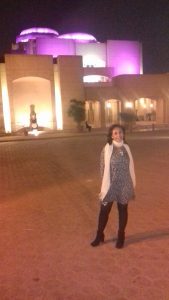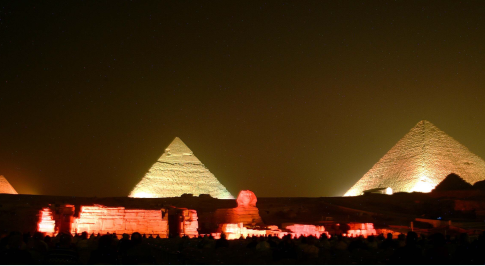 Cairo Is the capital of Egypt and the largest city in Africa and the Arabic world.
Cairo Is the capital of Egypt and the largest city in Africa and the Arabic world.
Located near the Nile Delta, it was founded in AD 969. Nicknamed “the city of a thousand minarets” for its preponderance of Islamic architecture, Cairo has long been a center of the region’s political and cultural life.
The city is rich in monuments that date back to the Pharaonic, Coptic, and Islamic periods, we find also interesting monuments that date back to the time of Mohamed Ali’s family ( X royal family). or what We call modern Egypt ( nineteenth and twentieth centuries).
Ref. wiki
The National Museum of Egyptian Civilization
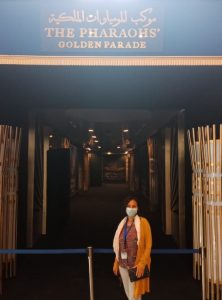
The museum houses a collection of artifacts representing art from the various historical periods of Egypt (Pharaonic, Greco-Roman, Coptic, Islamic, and Modern), as well as a Royal Mummies Hall, which was inaugurated in 2021.
It is located in Ain El Sira, Al-fustat, the first Arab-Muslim capital of Egypt, near old Cairo and the Ibn Al-As Mosque (the first Islamic mosque in Egypt) .
(Entrance ticket 500 EGP)
Memphis
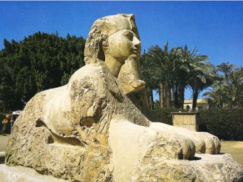
Was the first historical pharaonic capital of Egypt, it is 20 km south of Cairo, on the west bank of the Nile, a world heritage site since 1979. It dates back to 3200 BC.
During its golden age, Memphis thrived as a regional center for commerce, trade, and religion.
(Entrance ticket 200EGP)
Sakkara
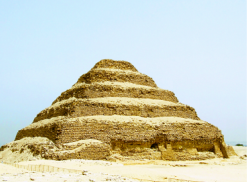
is on the west bank of the Nile, 25km south of Cairo, it is the first necropolis of Egypt where we can find The first step pyramid of King Djoser 2686-2613BC, We can also find several Mastabas (tombs), another 16 Egyptian kings built their pyramids at Sakkara. (Entrance ticket 600 EGP)
Dahshur
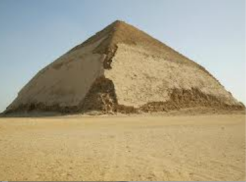
40 kilometres south of Cairo, two pyramids, the Red Pyramid and the Bent Pyramid were built by the Pharaoh Sneferu, father of Khufu (2613-2589 BC), Kyops, one can visit the Red Pyramid.
(Entrance ticket 200 EGP)
Giza
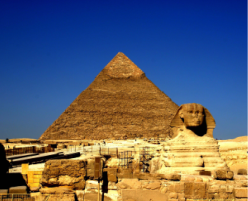
25 km southwest of Cairo city centre, there are the three pyramids (Kyops Khefren and Mekyrnes) and the Sphinx, The Great Pyramid is considered one of the seven wonders of the world.
It is the oldest of the ancient wonders And the only one still exists.
the Giza Plateau holds some of the most astonishing monuments in Egyptian history. Once thriving with the Nile that flowed right into the Giza Plateau, the pyramids of Giza were built overlooking the ancient Egyptian capital city of Memphis, which was near modern-day Cairo.
(Entrance ticket 700 EGP)
Egyptian Museum in El Tahrir Square
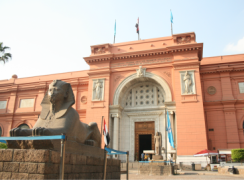
it has about 120000 items and the treasures of King Tut Ankh Amun, built in 1902.
It consists of two floors, the first floor contains monuments that represent Pharaonic art during its different periods (Old Kingdom, Middle Kingdom, New Empire), and we can find treasures of King Tut Ankh Amoun and the mummy’s hall on the second floor.
(Entrance ticket 550 EGP)
Saladin citadel On El mokatam hill
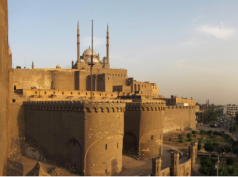
built by Saladin (1176-1183).
Mosque of Mohammad Ali
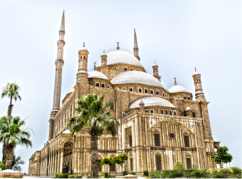
Known for the alabaster mosque, situated in the southern part of Saladin citadel, was built between 1830 and 1848 AD. (Entrance ticket 550 EGP)
The mosque-madrasa (school) of Sultan Hassan
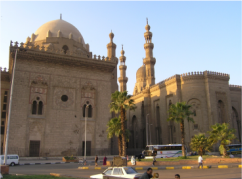
Near the citadel, which was built by Sultan Hassan, is considered a massive Mamluk-era mosque, a remarkable Architect in 1359AD.
El Rifai mosque
Was built between(1869-1912), and we can find tombs of kings and queens of the last royal family (1805-1952) we also find the tomb of the Shah of Iran.
(one entrance ticket for the two mosques Sultan Hassan Mosque and Rifaie mosque 220EGP)
The mosque of Ahmad Ibn Tulun
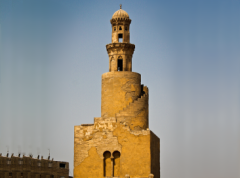
was built by Ahmad Ibn Tulun in the Samarra style, the Abbassid governor in 879AD. (Entrance for FREE)
Gayer Anderson Museum
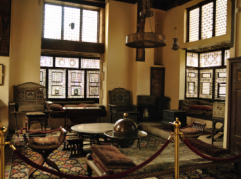
The Gayer-Anderson Museum (Bait al-Kretliya), is located in Cairo, adjacent to Ahmad Ibn Tulun’s Mosque
Two houses built in 1540 A.D and 1670 A.D, connected by a bridge, were occupied (1935-1942) by Gayer Anderson, a British officer in the Egyptian army Who filled the house with his collection of Oriental furniture, glassware, crystal, carpets, silks, He also collected beautiful furniture and works of art from Turkey, Persia, Syria, and other Oriental locations. (Entrance ticket 100 EGP)
Khan El Khalili souk
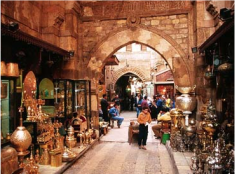
Is located in the Islamic area of Cairo and is known as the Turkish bazaar, it contains several shops and coffee Houses, it dates back to 1382AD.
Muizz street
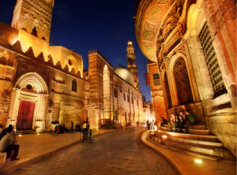
it is considered an open-air museum, it is one of the oldest streets in Cairo, it is one kilometre long, and it dates back to the 10th century.
Located near Bab El Fetouh and Bab El Nasr, the northern side of the city, in El Darb El Asfar, the most ancient quarter of Cairo, Bayt El Sehaymi is 350 years old.
(entrance ticket of monuments 220EGP).
Old Cairo / Coptic area
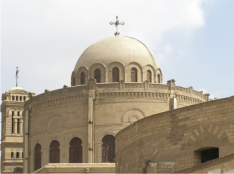
A part of Cairo, we find old Coptic Orthodox, and Greek Orthodox churches like the hanging church, Saint Serge, Saint George, and Ben Ezra synagogue, as well as the remnants of Fustat city (the first Islamic capital Of Egypt 641AD).
Al Azhar park
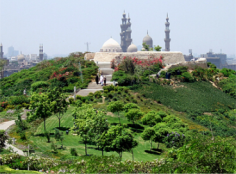
North of Saladin citadel, we find Al Azhar Park, a donation from the Aga Khan, a view of the citadel, and the Islamic area of Cairo
It was opened to the public in 2005
Mohamed Mahmoud Khalil Museum
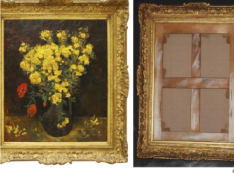
Mohamed Khalil’s palace was founded in Giza in 1915, He was the president of the Egyptian Senate Council between the years 1938-1940
The palace contains four floors, The museum contains some of the masterpieces of great artists who shared in the movements of fine art in Europe especially France in 1960 his wife donated the palace with its magnificent and rare artifacts to become a museum, and after that, she died.
Milometer of Cairo
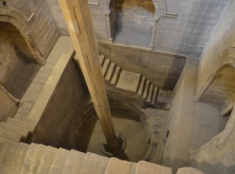
The Milometer in Modern Cairo on the southern tip of Rawda (Roda, Rhoda) Island is a unique historical site in Cairo. It has the properties of being one of the oldest structures in Cairo built after the Arab conquest and having a link to Egypt’s Pharaonic Era past.
It was used to measure the flood levels of the Nile River by modern dams, to regulate the distribution of water, and to compute the levy of taxes, 861 A.D
(Entrance ticket 120 EGP)
Oum Kalthoum museum
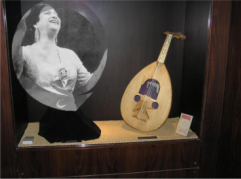
Is a biographical museum of the famous Egyptian singer Oum Kalthoum, she used to be called the Star of the East and died in 1975
Display of Musical Instruments and her performance dresses
Cairo opera house
Is located in Zamalek, and we can go on foot from El Tahrir Square crossing the Kasr el Nil Bridge, which is considered the centre of cultural activities in Cairo.
